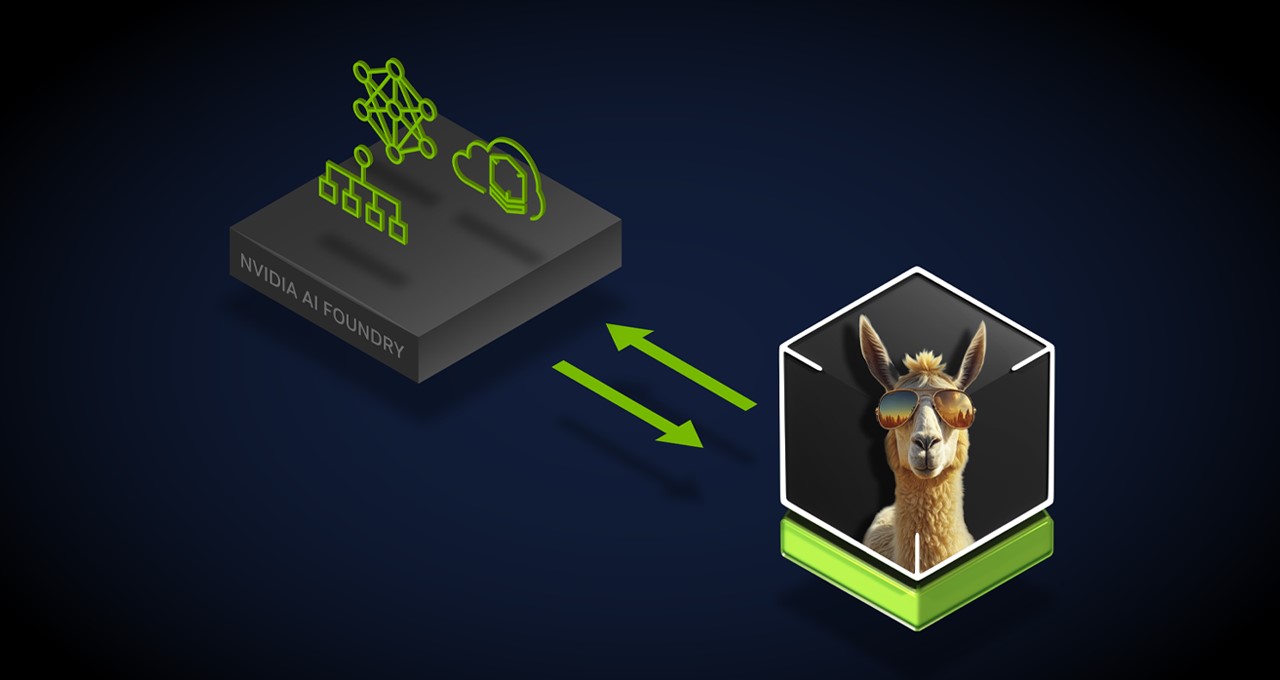엔비디아가 메타(Meta)의 오픈소스 AI 모델 컬렉션인 라마 3.1을 통해 전세계 기업의 생성형 AI를 강화하는 엔비디아 AI 파운드리 서비스와 엔비디아 NIM 추론 마이크로서비스를 25일 발표했다.

▲엔비디아 AI 파운드리 서비스와 엔비디아 NIM 추론 마이크로서비스 발표 / (사진:엔비디아)
AI 파운드리로 맞춤형 슈퍼모델 구축
新서비스, 국가 맞춤형 LLM 구축 지원
엔비디아가 메타(Meta)의 오픈소스 AI 모델 컬렉션인 라마 3.1을 통해 전세계 기업의 생성형 AI를 강화하는 엔비디아 AI 파운드리 서비스와 엔비디아 NIM 추론 마이크로서비스를 25일 발표했다.
엔비디아 AI 파운드리를 통해 라마 3.1과 엔비디아 솔루션을 활용해 도메인별 산업 사용 사례에 맞는 맞춤형 ‘슈퍼모델’을 만들 수 있다. 기업은 자체 데이터를 포함해 라마 3.1 405B와 엔비디아 네모트론(Nemotron) 리워드 모델에서 생성된 합성 데이터로 이러한 슈퍼모델을 훈련이 가능하다.
엔비디아 AI 파운드리는 엔비디아 DGX 클라우드(DGX Cloud) AI 플랫폼으로 구동된다. 이를 통해 AI 수요 변화에 따라 쉽게 확장할 수 있는 방대한 컴퓨팅 리소스를 기업에게 제공한다.
새로운 서비스는 기업뿐만 아니라 독자적인 AI 전략을 개발 중인 국가들의 맞춤형 거대 언어 모델(large language model, LLM) 구축을 지원한다. 각 언어권의 국가들은 고유한 비즈니스나 문화를 반영하는 생성형 AI 애플리케이션을 위해 도메인별 지식을 갖춘 맞춤형 LLM을 구축하려는 니즈가 있다.
현재 프로덕션 AI용 라마 3.1 모델의 엔터프라이즈 배포를 강화하기 위해, ai.nvidia.com에서 라마 3.1 모델용 엔비디아 NIM 추론 마이크로서비스를 공개하고 있다. NIM 마이크로서비스는 프로덕션 환경에서 라마 3.1 모델을 배포하는 가장 빠른 방법이며, NIM 없이 추론을 실행하는 것보다 최대 2.5배 더 높은 처리량을 제공한다고 강조했다.
기업은 라마 3.1 NIM 마이크로서비스를 새로운 엔비디아 네모 리트리버(NeMo Retriever) NIM 마이크로서비스와 결합해 AI 코파일럿, 어시스턴트, 디지털 휴먼 아바타를 위한 최첨단 검색 파이프라인을 구축할 수 있다.
현재 글로벌 전문 서비스 기업인 액센츄어(Accenture)가 자체 사용을 비롯한 문화, 언어, 산업을 반영하는 생성형 AI 애플리케이션을 배포하고자 하는 고객을 위해 엔비디아 AI 파운드리를 최초로 채택했으며, 액센츄어 AI 리파이너리(Refinery) 프레임워크를 사용해 맞춤형 라마 3.1 모델을 구축했다.
의료, 에너지, 금융 서비스, 소매, 운송, 통신 분야의 기업들은 이미 라마를 위한 엔비디아 NIM 마이크로서비스를 사용하고 있다. 새로운 라마 3.1용 NIM 마이크로서비스를 가장 먼저 도입한 기업 중에는 아람코(Aramco), AT&T, 우버(Uber)가 있다.
젠슨 황(Jensen Huang) CEO는 “메타의 오픈소스 모델인 라마 3.1은 전세계 기업에서 생성형 AI를 채택하는 데 중요한 순간”이라면서 “엔비디아 AI 파운드리는 라마 3.1을 전체적으로 통합했으며, 기업이 맞춤형 라마 슈퍼모델을 구축하고 배포할 수 있도록 지원할 준비가 돼있다”고 말했다.
